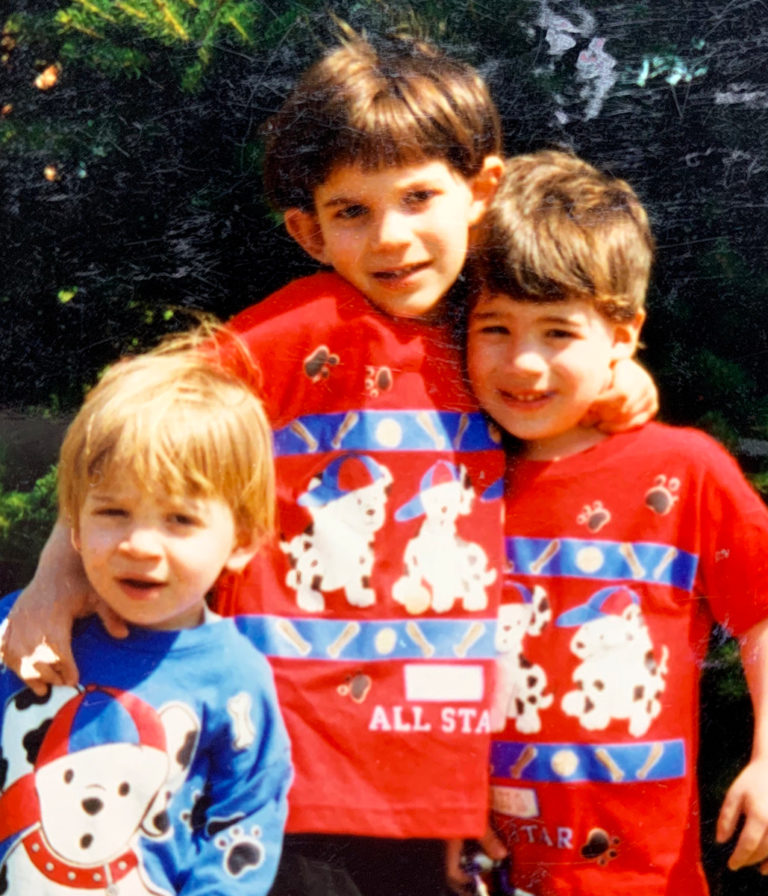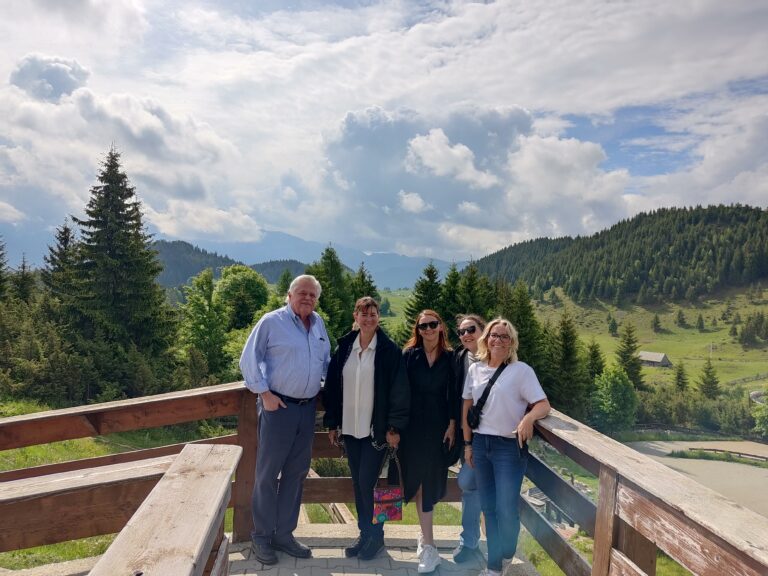Intention: Let’s Do This Smarter, Improving Results
 I have received some great feedback from families who have been utilizing The One Thing. Congratulations to all of you who have taken advantage of this great tool. The reason The One Thing works so well is that you are giving yourself permission to focus on something. Focusing on something is essentially a license to not try to focus on everything. If you haven’t figured it out yet, trying to focus on everything doesn’t work. If you haven’t started using The One Thing, I really encourage you to do it. Once you have incorporated The One Thing into your lives, I want you to go another step.
I have received some great feedback from families who have been utilizing The One Thing. Congratulations to all of you who have taken advantage of this great tool. The reason The One Thing works so well is that you are giving yourself permission to focus on something. Focusing on something is essentially a license to not try to focus on everything. If you haven’t figured it out yet, trying to focus on everything doesn’t work. If you haven’t started using The One Thing, I really encourage you to do it. Once you have incorporated The One Thing into your lives, I want you to go another step.
What is the purpose of your program? Many of you approach your program as if the goal were to check off a lot of boxes. That’s not the goal. The goal is to produce change. It’s easy to lose track of where we are going and to get lost in the process. As you are looking at your one thing, think about goals. Think about those important things that we are trying to change or develop and focus and work with intention.
Intention is working with a targeted mental focus for the purpose of producing a specific future change.
One of the most glaring things I see when reviewing program videos are folks obviously working without intention, which results in very slow progress. I wouldn’t want to count all the processing videos I have watched that made me want to scream. As most of you know, developing processing skills is rather foundational and really important. You should also know that even an incremental change in processing results in wonderful things, like better understanding, increased language, increase in global maturity, improved behavior, and better cognition-global change! Understanding this importance, many families justly prioritize their processing activities; but what I often see are parents doing the activities without a lot of intensity, which means they are doing it without intention. I often have to pay very close attention to the videos to determine if the child is getting the sequences right or wrong because watching the feedback from the parent or helper, there wasn’t much difference in the response, whether the sequence was done correctly or not. Without quality feedback and reinforcement your child isn’t even going to know what the goal is and certainly is not going to be working with intention.
To digress a tad, on my last trip to our Cincinnati chapter, where I work out of a hotel that sits on the Kentucky side of the Ohio River, just across from the city of Cincinnati, I renewed my perspective on intention and intensity. Often on these trips I take a little walk along the river after I have my dinner and before I go back to my room to address more emails. Looking across the river I can see both the Cincinnati football and baseball stadiums. The Ohio River is a big river, and although the stadiums sit close to the river’s edge, they are still quite a way away. During the baseball season the Cincinnati Reds play, and during the football season the Cincinnati Bengals play. If I happen to be out in the evening and a game is being played, there is absolutely no question if someone gets a hit or a homerun or a team scores a touchdown. On this last trip, I was walking and looking out at the stadium when a touchdown was scored by the Bengals. The roar of the crowd from where I was across the river was almost deafening, and then the sky lit up with fireworks. The intention is to win the game, and it is understood that to win the game you need to get hits or advance the ball on the football field. The fans react with intensity to each of these events. There is no question of the intention of the players or the fans. It is also not surprising that teams in cities with good fans who help generate intensity and keep the players focused on the intention do well.
The goal of working on processing is to raise the processing level, preferably quickly. Watching these videos, it becomes blatantly obvious that more often than not the intention is to complete the activity and check off the box. I’m sure as the parent pushes themselves and their child through the activity, they think that they just need to do this another few hundred or thousand times and their child will move forward and ultimately, they probably will. But if we address not only processing activities, but also everything we do with our kids with intention, we can meet our goals faster, and generally much, much faster.
As an example of how we can create intention, I will at times do processing activities with criteria. What this means is that rather than doing a processing activity for a specific duration, such as a minute or two, we do the activity with a target. For example, if we are just starting to get auditory digit spans of five, working with criteria we will let the child know that the goal of the session is to get a five. As soon as they get a five, we have a party and the session ends. Their intention is no longer just to cooperate, to try or pretend that they are trying; it is to get a five! And our intention is no longer to check off a box, it is to get a five. It can be amazing to see how much faster we can move forward when the intention is clearly defined, and the child is receiving good feedback.
One of keys to focus and intention is data and attention to detail. If you are working on teaching your child to identify pictures, read words, recognize numbers, or complete a math process, you can only work with intention if you know where you are and where you are going. For example, if you are trying to develop your child’s sight word vocabulary you need to know what they know. Perhaps you have shown them 50 new words over a month or so. How many do they know? If I were flashing them the words, I would periodically stop on a word and ask them what it was or start a review session by testing a few words. I would mentally keep track of how many of the words they know, about what percentage they know, and even what types of words. Armed with some data we can do a number of things. If you provide your coach and evaluator with the data, they can make recommendations to do everything from change frequencies and durations, to how many new words are being introduced, to what kinds of words to introduce, or even to putting it away for a while. If the data is simply that we have checked off x number of boxes over these weeks, that doesn’t really help us reach our goal. The intention of every session should be to succeed, to teach your child to read more words; and to do that within each session, you need to be gathering data and work with intention.
Intention is every bit as important for every other aspect of program, whether we are teaching a child to walk properly, to track better, or to love looking at pictures. With absolutely every activity we do, we need to be mindful of what we are trying to achieve; and we need to be observant and constantly adjusting, modifying, and gathering data. Our intention is to produce new function, new abilities and to change your child’s life one piece, one step at a time.
I find intention to be a fascinating neurological phenomenon. You can consciously start doing something with intention, but then your brain appears to learn to apply it without conscious effort. As an example, through the years I have had children read short non-fiction articles as part of their program, primarily to improve reading comprehension. Generally, it would appear to the parent who was working with the child during the day that the child was engaged, and since we were working to develop reading comprehension, that they were actually reading to learn. I would on occasion have the parents do an experiment. The experiment was quite simple: at dinner after everyone had sat at the table, but before anyone was allowed to start eating, I would have the child’s father ask them what the story they had read earlier was about. Many parents were shocked when they discovered that their child couldn’t even remember the subject, let alone any of the content. A common answer from children to the question, “What did you learn at school today?” is “Nothing.” If the family repeated this for a few days, the child would start remembering more and more about the story; and if the parents randomly asked the dinner question, the child would usually maintain their new intention, which was not just to read the story, listen to the story, and answer specific questions immediately after reading the story, but to learn and try to retain the information. After the first couple of days I’m sure the child, when they sat down to do their story, was not consciously thinking, “I need to remember this because Dad is going to ask me about it at dinner.” The child’s brain had changed and was applying greater intensity to recalling the information on an ongoing basis. Your brain adapts and changes and even generalizes intention. Very cool!
One Final Note on Intention
Parents generally work with a child with better intention than anyone who is paid. As a parent there are a lot of things you could do with your day rather than work with your child. You don’t do it because you’re getting paid; and actually, many of you could be out doing things for pay if you weren’t home working with your child. You do what you do because your intention is to help your child. Even for you it can be tough keeping your focus and working each activity with the needed intention.
If you are having people help with program implementation or even sending your child to school or therapy, the issue of intention becomes significantly greater. If working with a child or children is a job, often the job is defined as implementing specific methods as best you can. Not a bad objective, but it’s not the right objective. The intention should be to produce results—good results and fast results. One of the frustrations I face every day of my life is educators, therapists, and even physicians applying the same methodologies day after day and week after week and year after year, in spite of that fact that they haven’t worked or haven’t worked well or worked fast enough. It is easy for people to get stuck in the rut of “this is what we do and how we do it and so be it,” regardless of the results or lack of.
Sorry for the little digression—back to program helpers. It is more difficult for people getting paid to help with program to achieve and maintain the proper intention than it is even for parents. As parents and bosses and supervisors, part of your job is to train your helpers well, clearly define the intention, quiz them on the data, and tie their efforts to achievement of the intended results, not checking off boxes. You might find it interesting to note that historically volunteers do a better job maintaining intention than people who are paid, and often the more people are paid, the poorer job they do of program implementation and working with intention. Obviously there are exceptions, but if you are not getting paid or if the pay is minimal, it is more likely that the primary goal it to help the child.
On occasions where we have had siblings help with program, we encourage good intention not by paying the kids or even rewarding them for their time, but for results. It has been fun watching how fast things can change if we do something like, “When Johnny can do two 5s in row, we are all going to go out for dinner and to a movie.” Everyone’s intention is tied to their successfully hitting the target.
Fifty years ago, when I started doing this work, I heard comments such as, “You must be a very patient person,” or, “You need a lot of patience to work with handicapped children.”
I’m not a patient person. To the contrary, I’m quite impatient, which is why I am constantly creating and looking for better ways to do everything. My intention is, and your intention needs to be, to be impatient, to work with intention, and to make it right, make it better, and to improve your child’s life. With our joint focus and intention and, yes, some impatience, we can do it.





